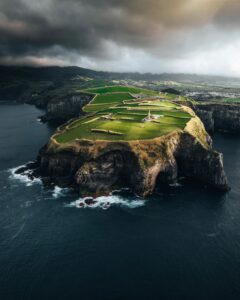
Photo tour in Azores, Portugal
Join us in the Azores for a unique photo tour, where you’ll elevate your creative skills with expert guidance from Ronald Soethje, Bruno Ázera, and Nomadict.
I captured the picture below in Mount Bromo (East Java). The image features a lovely old Land Cruiser against a cloudy background with low contrast. Since it looked flat, I followed seven steps to bring the image back to life. You can find the basic steps below, while in the video, you can watch how I edited this photo and other examples in depth!
A good composition and color palette makes photos look dynamic and aesthetic.
1) In this case, I corrected the image and cropped it to cut off the sky completely using a 4:5 ratio. In this sense, when cropping my images, I always keep in mind these two rules:
The golden ratio (1.618 to 1) is everywhere in nature and can help you lead the viewer around your image in a naturally striking and balanced way. You do not need to apply any numerical calculations to use this technique. Being aware of such a pattern, trying to find it in nature, and composing your images according to the spiral arrangement can be enough at the beginning.
The rule of thirds is a simplification of the golden ratio. It is easy to visualize as our cameras and editing software can help us to use this rule. To apply this compositional rule, place two horizontal lines on your landscape, one at 1/3 and the second at 2/3. Then place two lines vertically, again at 1/3 and 2/3. As a result, you will get a grid that divides your scene into nine rectangular areas. To use the rule of thirds, place your subject at one of the intersecting points. By doing so, the image becomes more aesthetically pleasing.
2) Next, I brightened the image up because the original was a little bit dark (exposure +0,95) and also went a bit more to the green side (tint -18).
3) To start giving the image my color style and add contrast, I used the Dehaze slider (-19), and I also took down a bit of Clarity to make it softer (-20).
4) I used the tone curve to enhance the contrast further. I created an S shape and was especially interested in darkening the shadows and the mid-tones. Since the image looked too bright for my taste, I lowered the exposure from +0,95 to +0,85.
5) Next, I took down the highlights (-6) and the whites (-27). I also took up the blacks to make the image more versatile to edit later (+52).
6) Before the color mixture, I went to the Calibration menu. I wanted the shadows to be a bit more green. So I took the bar to the left (-7). The Red Primary made the car a bit more yellowish-orange while making the background warmer (+43). The Green Primary splits the colors between the orange and the green tones. Pushing it to the right makes the green tones colder, or we can bring them closer together. In this case, I took them closer together, but not much (-16).
7) After these adjustments, the image still lacked a bit of contrast. So I worked with localized editing in the foreground, subject, and background, where most of the magic happened! Watch the last example in this video for the full breakdown!
Nothing fulfills me more than exploring the breathtaking beauty of nature and capturing these moments on video. Back in my studio, the ViewSonic ColorPro VP3881a monitor, with a 38” widescreen, offers an expansive view of my timelines.
The monitors, offering bright and vibrant colors with precise color accuracy and 100% coverage of sRGB and Rec. 709 for videos, enable precise color grading, allowing me to transform my RAW footage into something that looks lively and cinematic!

Join us in the Azores for a unique photo tour, where you’ll elevate your creative skills with expert guidance from Ronald Soethje, Bruno Ázera, and Nomadict.
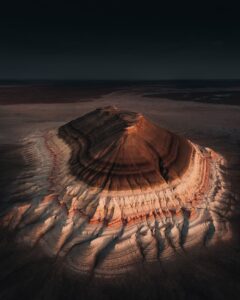
In this article, Forest shares how years of chasing scale, silence, and raw landscapes shaped his approach to photography, from the deserts of Kazakhstan to the volcanic ridges of Iceland. He talks about how he uses light, texture, and vast negative space to create images that feel both intimate and overwhelming.
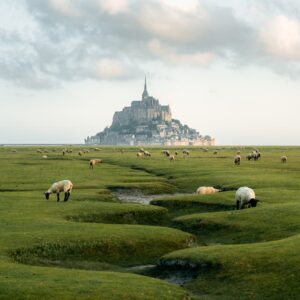
Simon shares the journey behind his photography, from early inspirations to field techniques, editing, and the story of the winning shot that shaped his path.
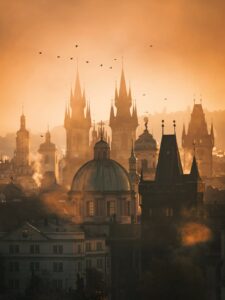
In this article, Miro shares how his love for cinematic music evolved into a deep passion for photography and how he uses light, color, and atmosphere to turn the streets of Prague into living film scenes.
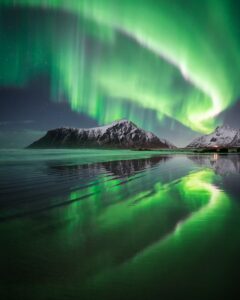
In this article, Stefanie reveals how her background in physics sparked her passion for astrophotography and how she blends science with creativity to capture the beauty of the night sky. Readers will discover her approach to color, contrast, and editing, as well as her aurora photography workflow.

Spanish photographer Yhabril captures the profound connection between humans and the mountains that shaped him. Growing up in the Pyrenees, his work bridges outdoor sports, landscapes, and celestial scenes — often blending athletes, moonlight, and wilderness into striking visual stories.
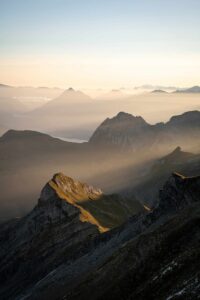
In this article, Ariane shares how photography helped her navigate personal challenges, connect authentically with people and animals, and develop a philosophy rooted in empathy and artistic freedom. Readers will also discover her ethical approach to wildlife photography and her trusted equipment for both camouflage techniques and cameras.
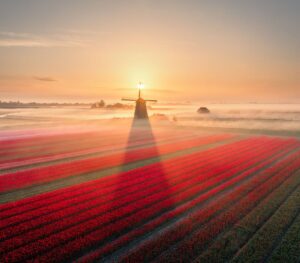
Discover how to photograph Dutch tulip fields in their most magical light. From choosing the right gear and lenses to mastering composition, color, and aerial perspectives, this guide shares creative techniques to capture the beauty of the Netherlands’ tulips. Learn how light, color grading, and proportion bring emotion into every frame.
